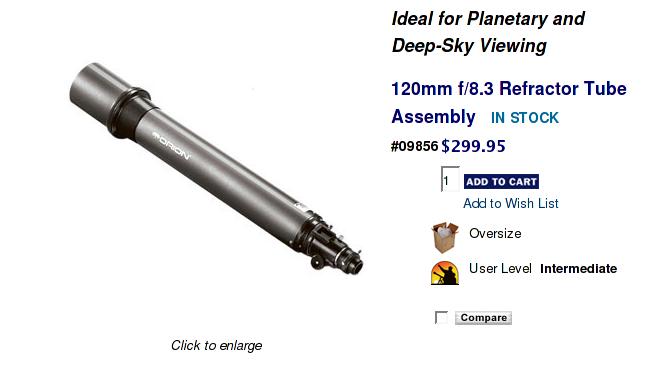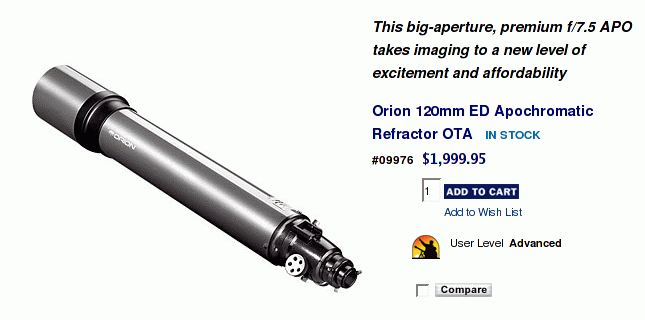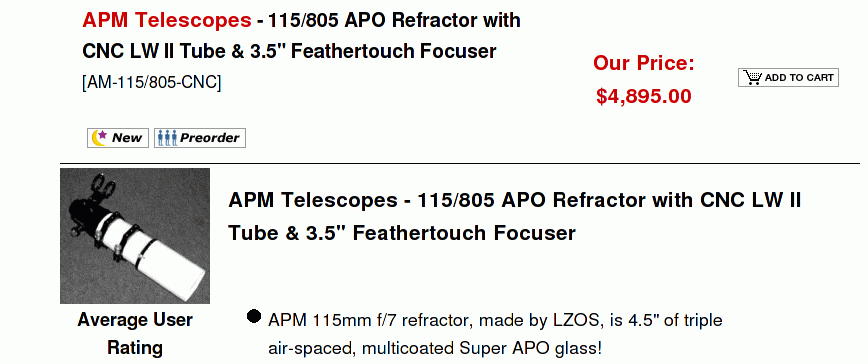
Optical telescopes have undergone several changes since their invention in the late sixteenth century. All telescopes gather light from a large area and bring it to a common focus. But the way they focus the light varies with design.
The earliest and simplest telescopes are refractors. They consist of a long, narrow tube with a lens at the front end. Light which passes through the lens is bent, so that initially parallel rays meet near the bottom of the tube.

Refractors are easy to make and, when small, relatively inexpensive. Large telescopes of this sort become unwieldy. The largest refractor ever put to practical use is the Yerkes 40-inch instrument; its aperture (front lens) is 40 inches in diameter. The tube is a bit longer ...

There are several drawbacks to this design:

If you look through a simple refractor, you'll see an image which is surrounded by a colorful haze, like this:
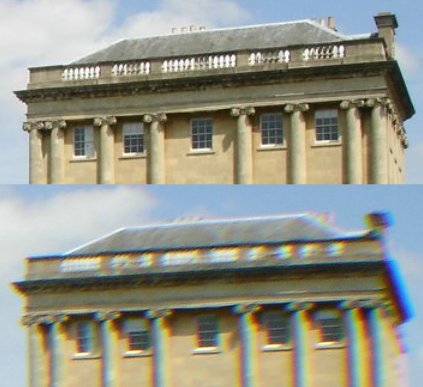
or this:
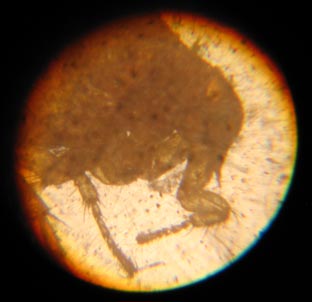
This chromatic aberration is the result of (in this case) blueish light being brought to a focus, but reddish light -- with a longer wavelength -- not quite arriving at the same focal point.
How bad is this problem? Let's work out an example to see ...
Joe builds a refractor using a lens which is made
of fused quartz. It is a convex lens with equal
radius of curvature on both sides:
left face: r1 = 2.00 m
right face: r2 = -2.00 m
Consider two light rays:
a blue ray of lambda = 400 nm n = 1.470
a red ray of lambda = 600 nm n = 1.458
Q1: How far from the lens does blue light come to a focus?
How far from the lens does red light come to a focus?
Q2: Joe places his film at the location where red light
from the Sun comes to a sharp image. How far away
is the image of the Sun in blue light?
Wow. It would seem that chromatic aberration is a big problem for refracting telescopes. Is there any way to fix things so that light of different wavelengths comes to a focus at the same point?
YES -- use two lenses made of different glass
The simplest fix is to make two lenses:
For example,
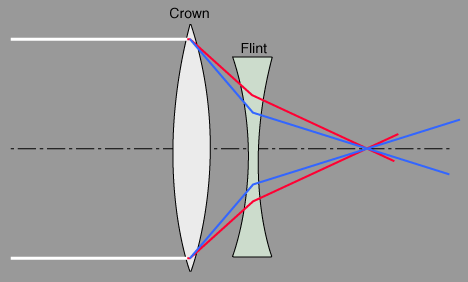
The first lens causes blue light to be BENT MORE sharply towards a focus; but the second lens then UNBENDS the blue light MORE sharply. If you pick the right combination of focal lengths, you can cause two different wavelengths, such as 400 nm and 600 nm, to come together at a single focus. This type of combination is called an achromatic doublet,
Unfortunately, light of some intermediate wavelength -- such as green light of 500 nm -- will come to a different focus. This type of telescope will still show some chromatic aberration.
Is it possible to do any better? Can we bring light of THREE different wavelengths to a common focus?
YES! Use three lenses of different glass
For example, this three-element apochromatic triplet
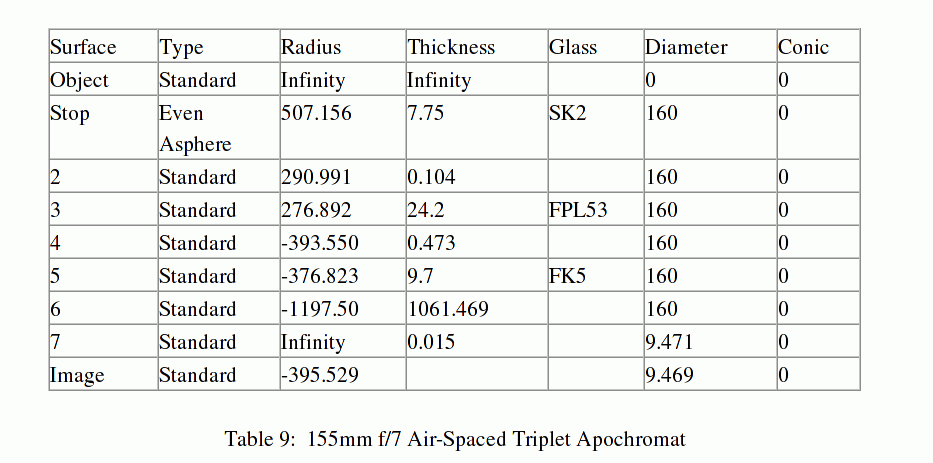
Table and image courtesy of
Roger Ceragioli
brings light of several different wavelengths to (nearly) the same focal point:
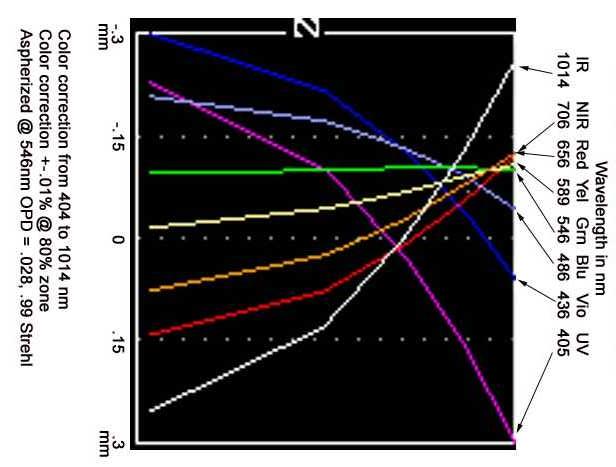
Well, that sounds great. But are there any drawbacks to making apochromatic refractors? Yup -- they cost a LOT more than doublet designs.
